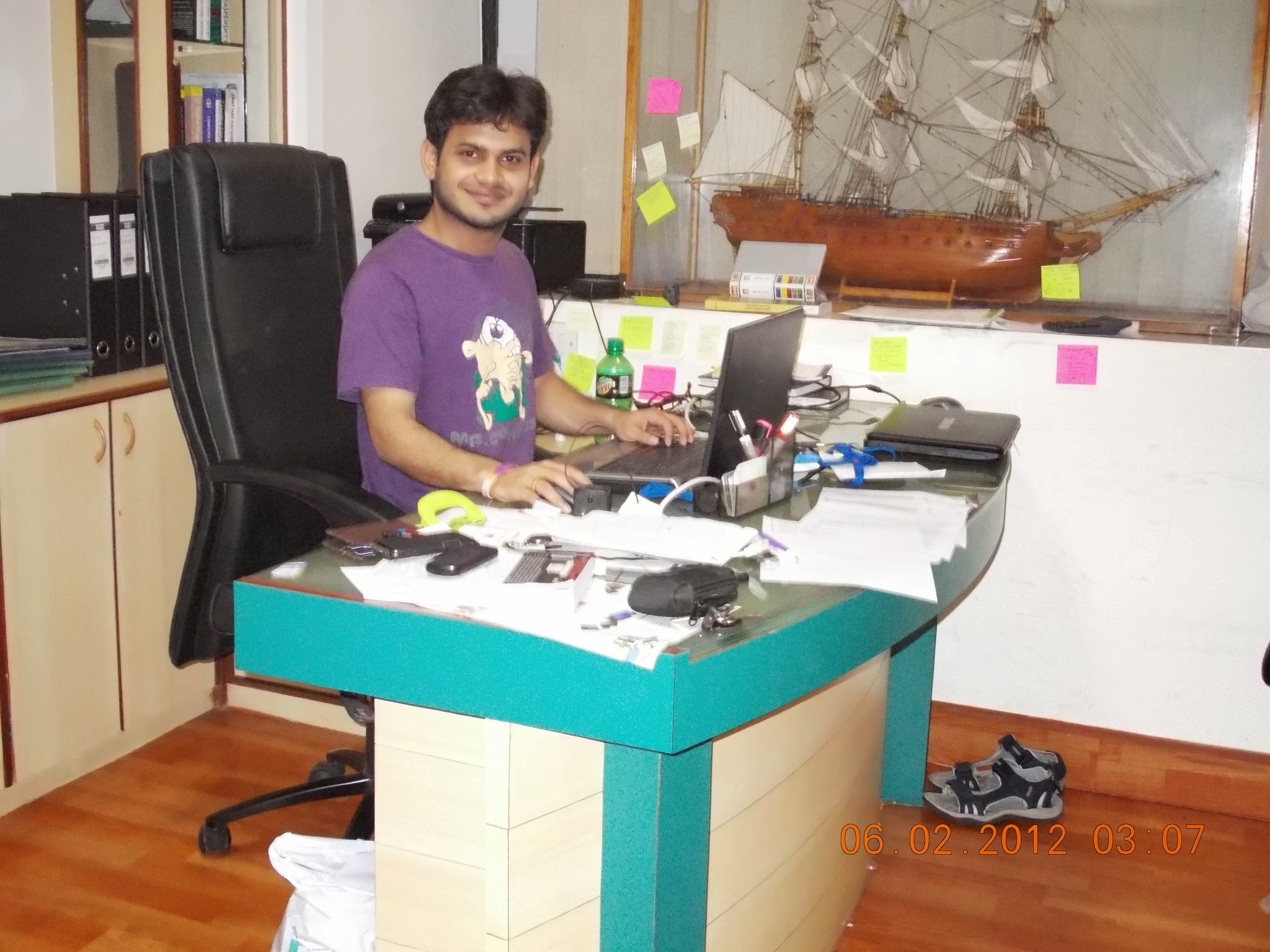
Top SaaS Trends Entrepreneurs Should Watch
Understanding the Evolution of SaaS: Opportunities and Insights
As the world around us rapidly evolves, staying ahead of technological trends becomes an imperative for entrepreneurs like me, who are deeply immersed in the SaaS (Software as a Service) arena. Being at the helm of Foundercrate, I have seen firsthand how pivotal it is for startups and established businesses alike to keep abreast of these changes to maintain competitive advantage and thrive. The shifting landscape of SaaS holds numerous opportunities, and by understanding the current trends, we can better navigate the future of technology.
The Rise of Artificial Intelligence in SaaS
Artificial Intelligence (AI) is no longer just a buzzword within the technology sector – it is a transformative force reshaping how software is delivered and consumed. In recent times, the integration of AI within SaaS solutions has enabled businesses to offer more personalized and efficient services to their users. AI empowers SaaS platforms to automate processes, enhance data analytical capabilities, and provide predictive insights that were once considered impossible. As entrepreneurs, embracing AI-driven SaaS solutions can optimize operational efficiency and offer innovative products tailored to customer needs. This shift not only helps in retaining current users but also in expanding market reach.
Micro-SaaS: Tailoring Solutions for Niche Markets
In a saturated marketplace, the prominence of Micro-SaaS cannot be overemphasized. These are specialized, smaller scale solutions targeted at addressing unique challenges within niche markets. Unlike traditional SaaS platforms focused on broad functionalities, Micro-SaaS ventures stand out by offering unique, hyper-focused services that cultivate loyal user bases. As someone who’s always had an eye on underserved markets, I find the potential for growth in Micro-SaaS to be immense. With lower startup costs and a concentrated target audience, these solutions provide a fertile ground for innovation and agility.
Prioritizing Cybersecurity in SaaS Products
One cannot talk about the future of SaaS without highlighting the growing significance of cybersecurity. As SaaS platforms handle vast amounts of sensitive data, ensuring robust security measures is paramount. Cyber threats are becoming increasingly sophisticated, and with data breaches potentially threatening user trust and business reputation, prioritizing cybersecurity is now more critical than ever. Entrepreneurs must invest in advanced security protocols and encryption technologies to protect end-user data. This commitment not only builds trust but also sets a standard for transparency and responsibility in the software industry.
Low-Code Platforms: Democratizing Software Development
Low-code and no-code platforms are democratizing app development, making it accessible to individuals without traditional coding expertise. Such platforms within the SaaS model revolutionize the creation and deployment of applications, significantly reducing time-to-market. They empower non-technical team members to become active participants in digital transformation efforts. For entrepreneurs, leveraging low-code platforms can accelerate innovation cycles and allow immediate adaptability in response to market needs. This trend is crucial for fostering a culture of creativity and speed within organizations.
The Continued Growth of Remote Work Solutions
The global and persistent shift towards remote work has introduced an array of opportunities within the SaaS ecosystem. Solutions that facilitate remote collaboration, communication, and productivity have experienced stark demand and will continue to do so. Entrepreneurs aiming to capitalize on this trend should focus on creating or enhancing applications that support flexible work environments. Integrating features that enable seamless interaction, data sharing, and workflow management will be essential as more businesses accept remote and hybrid models as the new norm.
The Promise of Blockchain Technology
Blockchain technology, while commonly associated with cryptocurrencies, offers immense potential within the SaaS domain. Its application in providing transparency, enhancing security, and ensuring data integrity presents compelling advantages for SaaS products seeking to instill trust and operational efficiency. As blockchain adoption expands, incorporating it into SaaS solutions opens up opportunities for creating cutting-edge services that can disrupt traditional models and provide competitive differentials. As entrepreneurs, it’s crucial to understand how blockchain can solve existing issues within various applications and industries.
I am constantly on the lookout for emerging trends that can shape the future trajectory of startups and innovations. The evolution of SaaS is a testament to how technology continues to redefine industries and alter business landscapes. The current trends present a myriad of opportunities for those willing to adapt and innovate. By embracing these advancements, entrepreneurs can not only anticipate the future but lead in creating it.
Let’s continue exploring these promising avenues, ensuring that as we build the technologies of tomorrow, we do so with insight, foresight, and unwavering resilience. For anyone eager to join this journey or keen on sharing insights, I’m always open to discussions and collaborations. Stay tuned for more insights on tech innovation and entrepreneurship.

The Art of Learning from Failures in Business
Introduction
Failure is often seen as a setback, a stumbling block in our journey toward success. However, in the world of entrepreneurship, failure is not just inevitable; it is essential for growth. Let’s dive into the art of learning from failures in business and transform those challenges into opportunities for development and resilience.
I have experienced my fair share of failures, and these experiences have shaped my entrepreneurial journey. I believe every misstep contains valuable lessons that can contribute to building a more robust and resilient business. Here’s how I managed to turn failures into stepping stones for success.
Embracing the Reality of Failure
Failure is not just a possibility; it’s often an integral part of the startup ecosystem. Embracing this reality begins with changing our mindset towards failure. Instead of fearing failure, I began to view it as an opportunity to learn and grow. This paradigm shift helped me adjust my strategies and expectations.
Reflect and Analyse
Each failure presents a unique opportunity to learn. I make it a priority to reflect on what went wrong, understanding the factors that led to the failure. This could be decisions made too hastily, or perhaps external circumstances outside my control. I often ask myself:
- What assumptions did I make that turned out to be inaccurate?
- Were there warning signs that I ignored?
- How did my team and I adapt to changes in the environment?
By analysing these points, I can prevent similar pitfalls in the future, evolving both personally and professionally.
Learning and Adapting
One of the most critical aspects of dealing with failure is the ability to learn and adapt. It’s not enough to recognise a mistake; it’s vital to adapt strategies based on these learning experiences. There is no one-size-fits-all approach, but flexibility and an open mind can make a significant difference. I focus on:
- Seeking new perspectives and ideas from mentors and peers.
- Continuously updating knowledge through research and self-education.
- Implementing changes in my approach and testing new strategies.
Building Business Resilience
The process of bouncing back from failure builds resilience, which is crucial for sustained success in business. Over the years, I’ve learned that resilience is not just about enduring stress but thriving from it. This involves cultivating a strong, supportive team, maintaining flexibility, and having a clear vision that drives me forward.
Some ways to strengthen resilience include:
- Establishing a resilient culture: Encouragement of a failure-friendly environment where team members are not afraid to take calculated risks.
- Consistent communication: Keeping an open line with the team to ensure a shared understanding of goals and challenges.
- Resource management: Smart allocation and reallocation of resources as the business landscape changes.
Sharing My Journey
One of the most rewarding aspects of embracing failure is the ability to share these experiences with others. My journey has taught me that by sharing insights and stories of setbacks and triumphs, I can inspire and guide upcoming entrepreneurs through their paths. Giving back by mentoring and advising others has always been close to my heart.
Check out other resources and insights here to deepen your understanding and preparedness for the entrepreneurial challenges you may face.
Conclusion
Failure is not the end. It is the beginning of learning, growth, and resilience in business. By embracing setbacks, analysing outcomes, learning and adapting, and sharing our stories, we can turn what seems like defeat into valuable milestones in our entrepreneurial journey. I encourage you to view failures as opportunities for growth and invite you to join me in this continuous journey of learning and resilience.
To stay updated with more insights and stories from my entrepreneurial experiences, subscribe to my blog. Let’s transform failures into formidable stepping stones towards success.

Essential Skills Every Entrepreneur Should Master
Your Entrepreneurial Journey Begins Here
Embarking on the entrepreneurial journey is no small feat. Whether you’re just starting out or deep in the trenches of building your empire, mastering certain skills can be the difference between mere survival and noteworthy success. I’ve gathered crucial insights over the years, and now, I’m here to share with you some essential skills that every entrepreneur should work on mastering.
Vision and Strategic Planning
First and foremost, having a clear vision of where you see your business in the future is vital. This vision functions as your guiding light, helping you steer your company in the right direction. Alongside this, developing solid strategic planning skills can help turn that vision into a reality. From drafting business plans to outlining actionable steps, it is about thinking ahead and making informed decisions. Delve into various planning tools, read case studies, and don’t shy away from seeking mentorship from seasoned entrepreneurs. Learning from others’ successes and mistakes can give you a significant edge.
Financial Acumen
Understanding finances might not be the most glamorous aspect of entrepreneurship, but it is undeniably one of the most crucial. Being proficient in financial management allows you to optimize resources, assess risks, and drive your business towards sustainable growth. Dive into financial reports, understand the metrics behind your earnings and expenses, and be hands-on with budgeting and forecasting. To ensure your continued growth, consider resources and tools like QuickBooks or Xero that can simplify financial tracking.
Leadership and Team Management
No entrepreneur succeeds alone. The ability to lead and inspire your team is paramount. A true leader fosters a positive company culture where creativity and collaboration can thrive. Empathy, effective communication, and the ability to delegate are non-negotiable tenets of good leadership. Remember, it’s about leading by example and empowering your team to align with the shared company vision.
Adaptability and Resilience
The business landscape is ever-changing, and being adaptable can help you stay one step ahead. It’s crucial to innovate constantly and pivot when necessary. Challenges and failures are part and parcel of entrepreneurship, and resilience is what will help you endure tough times. By staying flexible and open to change, you allow yourself and your business to evolve and grow alongside market demands and technological advances.
Marketing and Brand Building
In today’s digital age, mastery of marketing and brand building is indispensable. Crafting a strong brand narrative that resonates with your audience is key. Dive deep into understanding your target market, leverage digital marketing tools, and create impactful content that tells your brand story. Remember, the goal is to create genuine connections with customers that foster loyalty and advocacy.
Networking Skills
Relationships drive business success. Networking is not just about creating business contacts; it’s about forming meaningful relationships that can offer mutual benefits. Attend industry events, join professional groups, and don’t underestimate the power of maintaining a robust online presence. These relationships can lead to collaborations, partnerships, and invaluable advice and support.
Continuous Learning and Innovation
We’ve entered an era where everything is evolving at breakneck speed — staying static is not an option. Commitment to continuous learning keeps you ahead of trends and lets you proactively address changes in your industry. Be curious, seek new knowledge, embrace innovation, and never stop experimenting. Your ability to innovate will help distinguish your business in a crowded market.
Conclusion: Embrace the Journey
The entrepreneurial journey is both challenging and rewarding. By honing these essential skills, you equip yourself to navigate complexities with confidence and poise. Keep in mind, the journey is as important as the destination—embrace it, learn from it, and make it uniquely yours. I encourage you to explore more about entrepreneurship and how we can support your journey further by following along with my insights and experiences.

Building a Scalable SaaS Business from the Ground Up
Embarking on the journey of building a SaaS business is both exhilarating and daunting. The promise of recurring revenue, lower overhead, and a wide reach can be enticing. However, achieving scalability – the ability to grow without proportional increases in cost – remains a significant challenge for many entrepreneurs. Through my own experiences, I’ve come to understand not only the immense opportunities involved in this space but also the critical strategies needed to nurture scalable growth.
Understanding the SaaS Landscape
Diving into the Software as a Service (SaaS) sector requires an appreciation of its unique attributes. Unlike traditional software models that demand one-time purchases, SaaS thrives on subscriptions. This ensures a consistent revenue stream but also demands continuous value delivery to retain customers. The challenge lies in crafting a product so compelling that it becomes an indispensable tool for users, encouraging long-term subscriptions.
Finding the Right Market Fit
One cannot overstate the importance of aligning your SaaS offering with a genuine market need. In my own journey, I’ve witnessed how critical it is to test assumptions with real-world users early and often. Efficiently marry your vision with market demand, and you’ve laid the foundation for a successful enterprise. Regular feedback loops with clients encourage iterative development, ensuring that the product aligns closely with evolving customer needs.
Crafting a Robust Business Model
A genuine market fit is only part of the equation. A sound, scalable business model is pivotal for sustained growth. Here are some components that I believe are crucial:
- Value Proposition: Clearly articulate the unique benefits your SaaS solution offers, distinguishing it from competitors.
- Pricing Strategy: Implement a flexible pricing model, offering viewers options such as freemiums or tiered pricing to cater to different audience segments.
- Retention Over Acquisition: It’s often said that retaining existing customers is less costly than acquiring new ones. Implement strategies such as onboarding processes, personalized communication, and advanced customer support to nurture long-term relationships.
Automating for Efficiency
Automation is key for scalability. By automating routine tasks such as invoicing, customer support, and user onboarding, I could allocate resources more efficiently elsewhere. This not only optimizes operations but also ensures consistency. Automation tools can empower key processes, driving seamless growth as your user base expands.
Technology and Scalability
The backbone of any SaaS venture is its technological infrastructure. An architecture designed for scalability can handle growing demand without a dip in performance:
- Cloud Solutions: Leverage cloud platforms that offer the flexibility and elasticity required to scale resources on demand. This promotes cost-effectiveness, especially during periodic spikes in usage.
- Microservices Architecture: Consider breaking down applications into microservices that function independently. This model allows focused optimizations and quicker iterations, which can be done without affecting other components.
- Security and Compliance: Never compromise on data security and regulatory compliance. Implement robust security protocols to build trust with your clientele, ensuring long-term business relationships.
The Human Element
Even in the cloud-driven world of SaaS, people remain your greatest asset. Recruiting and empowering a passionate team who believe in your vision is vital. Investing in their growth and providing an environment that catalyzes creativity can turn your people into your best innovation drivers.
Growth Through Strategic Alliances
Often overlooked, strategic partnerships can be instrumental in accelerating growth. In my experience, forming alliances with complementary businesses or influencers opened doors to new audiences, extending our market reach.
The Role of Content Marketing
Establishing authority and trust in your domain is greatly accelerated by effective content marketing. Share insightful content demonstrating a deep understanding of your audience’s challenges, and offer actionable solutions. This doesn’t just drive engagement but positions your SaaS venture as a trusted thought leader in the industry.
Continuous Improvement and Feedback Loop
The SaaS world is ever-evolving, and stagnation can be detrimental. By establishing a culture of continual learning and adaptation based on user feedback, I have kept agility at the heart of my enterprises, ensuring relevance amidst changing trends.
Building a scalable SaaS business entails many challenges, but it’s also an unforgettable rewarding journey. For those who are willing to listen, learn, and adapt, the path is ripe with opportunities for impact and innovation. I invite you to follow my journey for ongoing insights and learnings as we navigate this dynamic landscape together.

Continuous Learning: A Key to Staying Relevant in SaaS
In the fast-paced world of Software as a Service (SaaS), change is not just inevitable; it’s unstoppable. As a SaaS entrepreneur, I’ve come to understand that the success of my ventures is deeply intertwined with my ability to adapt, innovate, and learn. In this dynamic landscape, continuous learning isn’t just a luxury—it’s a necessity. It’s the key to staying relevant, competitive, and ahead of the curve.
The Importance of Continuous Learning in SaaS
The SaaS industry is characterized by rapid technological advancements and ever-evolving customer demands. The tools and platforms we rely on today can become obsolete tomorrow. If we’re not actively seeking new knowledge and skills, we’re at risk of falling behind, both individually and as a business. Continuous learning in this field means understanding emerging technologies, adapting to innovative business models, and enhancing one’s existing skill set to drive success.
Keeping Up with Technological Advancements
Technology is at the heart of SaaS, and the rate at which technology evolves is astounding. Just think about the seismic shifts we’ve seen with the rise of artificial intelligence, machine learning, and cloud computing. As SaaS professionals, it’s crucial for us to not only understand these technologies but also to forecast their impact on our businesses.
For instance, AI can drastically improve customer support processes, while cloud computing offers scalability and flexibility like never before. To leverage these technologies effectively, I constantly engage with online courses, webinars, and expert discussions. Not only does this deep dive help in implementation, but it also fosters innovation.
Adapting to New Business Models
The SaaS industry is also experiencing a shift in business models, with subscription-based services and pay-as-you-go plans growing in popularity. Understanding these models and their implications is crucial for remaining competitive. By learning from other industries, I can adapt these concepts to our models at Foundercrate, ensuring we are meeting, and exceeding, customer expectations.
Enhancing Existing Skill Sets
While technical skills remain critical, soft skills—such as communication, leadership, and agility—are equally significant in the SaaS arena. As the founder of a company, possessing these skills has helped navigate the complexities of team dynamics, client relationships, and strategic decision-making.
SaaS leaders must embrace a learning mindset that goes beyond technology, encompassing areas like customer relationship management, financial acumen, and marketing strategies. Continuous upskilling ensures that we’re not just surviving but thriving in the face of change.
Strategies for Continuous Learning
So, how do we cultivate an environment of continuous learning in SaaS? Here are some strategies that have worked for me:
- Staying Informed: Engage with industry blogs, podcasts, and publications to stay up-to-date with the latest trends and insights.
- Networking and Mentorship: Build connections with other SaaS professionals and industry leaders. Learning from other’s experiences offers insights that are not always available in books or courses.
- Formal Education: Enroll in courses or workshops that offer certifications in new technologies or methodologies pertinent to SaaS.
- Experimentation: Foster a company culture that encourages experimentation and learning from both successes and failures. This approach propels innovation and builds resilience.
By empowering my team at Foundercrate with these strategies, we’re able to maintain an edge in the competitive SaaS market while fostering a culture of growth and innovation.
Embrace the Journey
Continuous learning is not a destination—it’s a journey. In the world of SaaS, learning is the fuel that drives success. It enables us to adapt, innovate, and lead. Embracing this journey of skill development ensures that as the industry evolves, we do too.
If you’re as passionate about growth and innovation as I am, I invite you to follow my journey at Foundercrate. Together, we can navigate the exciting yet challenging landscape of SaaS with confidence and clarity. Let’s keep learning, growing, and changing the game.

Blockchain: A Revolutionary Technology Beyond Bitcoin and Cryptocurrencies
Understanding Blockchain: More Than Just a Digital Ledger for Cryptocurrencies
Blockchain technology is often synonymous with Bitcoin and other cryptocurrencies. However, it’s crucial to understand its broader implications. Essentially, blockchain is a peer-to-peer network of computers and servers collectively making decisions without relying on a central authority. This decentralized decision-making process is achieved through consensus algorithms, making blockchain a groundbreaking technology that could spearhead future innovations.
Imagine conducting an election every second, on every decision, among a billion people, without any election commission. That’s the kind of revolutionary transparency and efficiency blockchain brings to the table.
The Versatility of Blockchain: Applications Beyond Digital Currency
Blockchain’s potential extends far beyond its application in cryptocurrencies like Bitcoin. This technology, known for its security, speed, and power, has far-reaching implications in various industries:
- Data Security: Enhancing the integrity and confidentiality of data.
- Record Keeping: Revolutionizing how records are maintained across sectors.
- Supply Chain Management: Bringing transparency and efficiency to supply chains.
- Cross-Border Banking Transactions: Facilitating secure and real-time international financial exchanges.
- Voting Systems: Ensuring the integrity and transparency of electoral processes.
Cryptocurrencies are just one application of blockchain, utilizing its capacity to confirm and record transactions. This technology’s independent and distributed nature makes it ideal for applications where transparency and security are paramount.
The Future of Blockchain: Bringing Transparency to Diverse Sectors
Blockchain’s potential applications are vast, ranging from voting systems to real estate. Its ability to bring unprecedented transparency to these sectors makes it a technology worth exploring beyond the realm of digital currencies.
In the upcoming series, we will delve deeper into how blockchain can transform various industries, both large and small, and revolutionize the way we handle data, conduct transactions, and maintain records.
Stay tuned as we uncover the multifaceted applications of blockchain technology, demonstrating its impact beyond the world of cryptocurrencies.

Unraveling the Noida Company Scam: A Cautionary Tale of INR 3700+ Crore and 6.5 Lakh People
In the quest for wealth, boundaries between legal and ethical practices can sometimes blur. Today, I’m dissecting the notorious “Like Scam” by a Noida-based company, which duped INR 3700+ crore from 6.5 lakh people. While the media has highlighted various aspects of this scam, the mechanics of the fraud itself often remain unexplained. Let’s delve into this.
The Misconception: Like or Click Scam?
Contrary to popular belief and media reports, this wasn’t a “Like” scam; it was a “Click” scam. But what does that mean? Let’s break it down.
The Mechanics of the Scam
Imagine two ordinary individuals, Alice and Bob, both looking to multiply their savings. They encounter Social Blaze, the company at the center of this scam. Social Blaze asks them to deposit an amount between INR 5.5k and INR 55k, promising returns for clicking on ads within a portal it provides. The more people they bring into the system, the more they supposedly earn. Alice even goes a step further, hiring people to click on ads.
The Illusion of a Legitimate Business
On the surface, this model might seem attractive and viable. There’s no apparent upper limit to earnings, and it looks like a straightforward exchange of clicks for cash. But here’s the catch: this is not how genuine businesses operate.
Unpacking the Scam
Let’s examine why this setup was dubious. While technically legal under Indian law, it was fundamentally unethical. The supply and demand for these ad clicks were artificially created by the members themselves, with no real interest in the ads. These were fake clicks, devoid of any genuine Call-To-Action engagement.
In essence, Social Blaze was circulating money within its system under the guise of ad revenue, without any real value or service being exchanged.
The Profit Model of Social Blaze
The company’s revenue model was structured to start slow. As membership grew into the hundreds of thousands, Social Blaze adjusted the payout and click rates to ensure a steady, albeit slow, income stream for its members, all while amassing significant profits for itself.
The Takeaway: Legal Doesn’t Always Mean Ethical
This case study categorizes businesses into four groups: Legal & Ethical, Legal & Unethical (like Social Blaze), Illegal & Ethical, and Illegal & Unethical. It’s crucial to recognize and steer clear of ventures that fall into the unethical categories, regardless of their legal standing.
The digital age brings with it a plethora of business models. While many are legal, not all are ethical. As consumers and investors, it’s imperative to remain vigilant.
I invite your thoughts and comments on this matter. For more insights and analyses on similar topics, remember to subscribe to my blog.

Who Am I and Why You Must Read My Blog?
Hello and welcome! I’m Toshendra Sharma, an entrepreneur with over eight years of self-taught experience. My journey, filled with challenges and victories, is a testament to the spirit of entrepreneurship.

This is me in Feb 2012 at 3 AM working while I was doing my Masters from IIT Bombay.
The Beginning: A Leap into Entrepreneurship
After completing my B.Tech in 2009, I co-founded Robosapiens Technologies in Noida, India. Specializing in Embedded Systems and Educational Robotics Training, I spearheaded the company as the R&D Head. However, my passion for computer science led me to further academic pursuits, culminating in an impressive AIR 41 ranking in the Gate exam and enrollment at IIT Bombay for an M.Tech in Computer Science.
Wegilant: From a Hostel Room to a Successful Venture
At IIT Bombay, my entrepreneurial ambitions crystallized into reality with the launch of “Wegilant” in 2011. Initially a training and services company, Wegilant later pivoted to a SaaS-based Mobile App Security Scanner, Appvigil, in 2014. Wegilant’s journey from a hostel room to a Private Limited company is a story of perseverance and innovation.
Embracing Challenges: My Path to Success
Juggling academic responsibilities and business ventures, I transformed Wegilant into a successful enterprise, generating significant revenue in its first financial year. This period was marked by relentless dedication, where I managed every aspect of the business while maintaining a student’s life.
Learning Through Experience: The Heart of My Entrepreneurial Journey
My path was paved with mistakes and critical decisions, each a valuable lesson in the world of entrepreneurship. Despite financial hurdles and numerous challenges, I never lost sight of my goals. This resilience and tenacity earned me a place in Forbes’ #30Under30 list in 2016.
A Technologist at Heart
Beyond entrepreneurship, I am a technologist passionate about building automated solutions and scalable architectures. My skills range from web and mobile technologies to designing secure APIs, encapsulating the essence of a tech innovator.
Upcoming Insights: A Guide for Aspiring Entrepreneurs
In my upcoming posts, I’ll share insights and experiences from my entrepreneurial journey. Expect topics like building a company during academic pursuits, understanding SaaS, navigating seed funding, and balancing entrepreneurship with personal life.
Your suggestions and questions are highly valued. Feel free to contribute your thoughts in the comments section.
Join me on this enlightening journey and gain insights from my experiences as an entrepreneur. Stay tuned!
